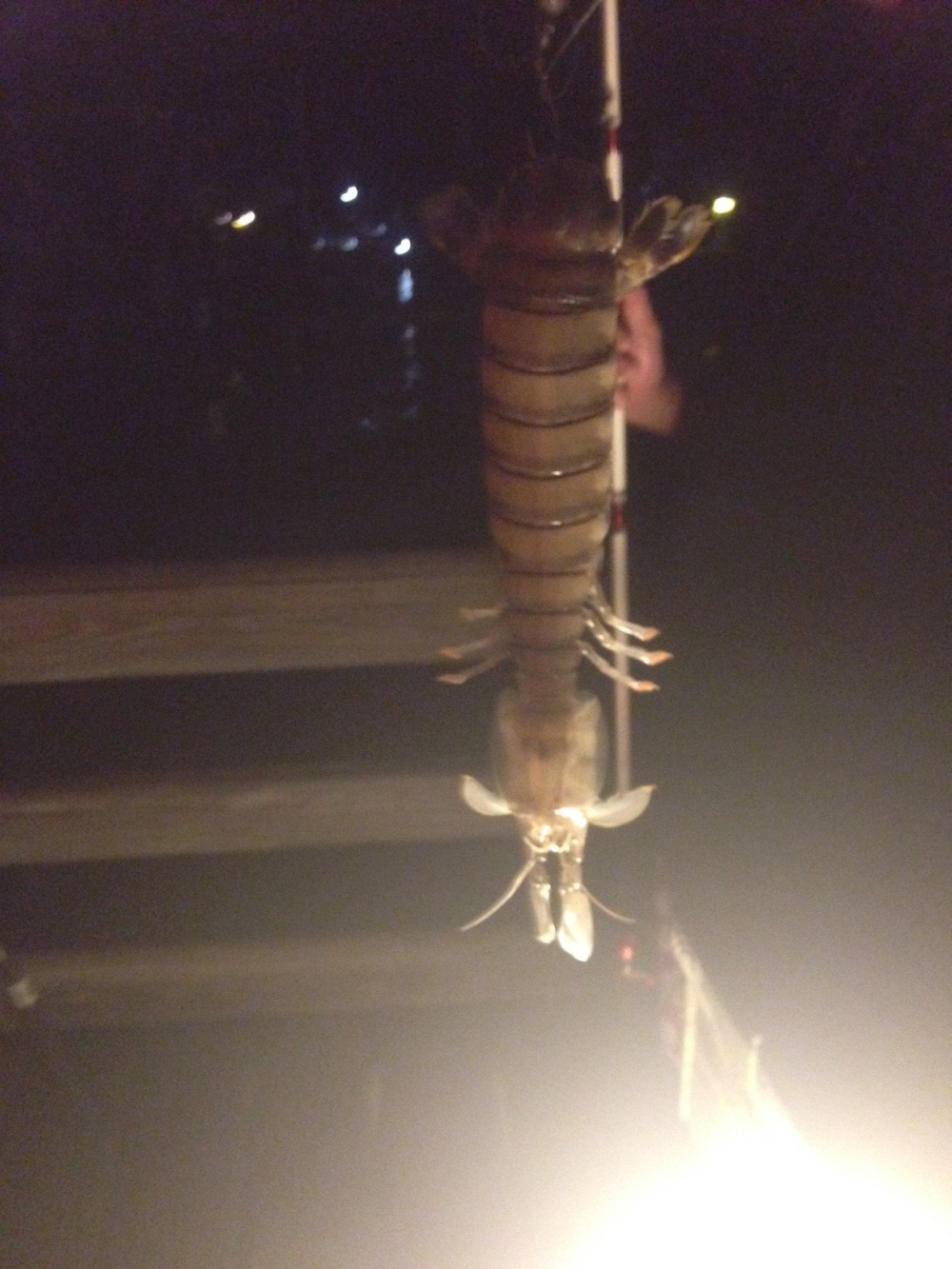Oversized Alien-Like 'Shrimp' Caught Off Florida Is ID'ed

It's not every day that an ordinary fishing trip turns into an encounter with an oversized alien-like sea creature, but that's what happened recently to one Florida fisherman.
Steve Bargeron was fishing off a dock in Fort Pierce, Florida, last week when a couple fishing nearby pulled up what Bargeron jokingly described as an "alien creature." The couple wasn't interested in keeping the strange, lobster-like animal, which was flopping its tail wildly, Bargeron told Live Science. So the curious fisherman took a few photos and then threw the critter back into the water.
But Bargeron's close encounter with this strange-looking specimen isn't really that strange after all, according to Roy Caldwell, a professor of integrative biology at the University of California, Berkeley. Caldwell said he saw the photos online and instantly recognized the creature as a mantis shrimp, or stomatopod, a marine crustacean commonly found in the waters off Florida. [See Photos of the Alien-Like Shrimp Caught Off Florida]
Stomatopods are easily identified by their prominent claws, which, depending on the species, they use to either stab or smash prey, Caldwell said.
"Praying mantis have similar [appendages], which is why these creatures are sometimes called 'mantis shrimp,'" Caldwell told Live Science.
The specimen caught in Florida belongs to a species of Lysiosquilla, according to Caldwell. Like other members of its species, the creature has three pairs of walking legs and a large, articulated abdomen, Caldwell noted.
"This particular group — Lysiosquillidae — are almost all banded yellow and black across their bodies," Caldwell said. They can live for 30 years and can grow to be 12 inches (30.5 centimeters) long, he added.
Sign up for the Live Science daily newsletter now
Get the world’s most fascinating discoveries delivered straight to your inbox.
But this specimen doesn't belong to the largest of stomatopod species, according to the biologist. That distinction goes to Lysiosquillina maculata, which inhabit the Pacific Ocean from Hawaii to east Africa. Caldwell said the largest known members of the species were 15 inches (38 cm) long.
Even so, Bargeron said the mantis shrimp he found recently was significantly bigger than the largest-known Lysiosquillina maculata at 18 inches (46 cm) long. However, the fisherman pointed out that he didn't have a tape measure handy to properly record the size of the catch.
Caldwell, who said he's been studying stomatopods for 50 years, said an 18-inch catch is unlikely. Photos, he pointed out, can sometimes be deceiving. He also noted that, with its claws extended, a stomatopod tends to look much longer than it really is. The standard for measuring the creatures is from the tip of the eye to the end of the tail — claws not included.
But the sighting of a mantis shrimp is still something to celebrate. Fishermen and other water-loving folks don't often get to see these strange-looking animals, because they live in burrows on the seafloor and seldom come out. In fact, female mantis shrimp may never leave their burrows during their lifetime, Caldwell said.
Follow Elizabeth Palermo @techEpalermo. Follow Live Science @livescience, Facebook & Google+. Original article on Live Science.

Elizabeth is a former Live Science associate editor and current director of audience development at the Chamber of Commerce. She graduated with a bachelor of arts degree from George Washington University. Elizabeth has traveled throughout the Americas, studying political systems and indigenous cultures and teaching English to students of all ages.









